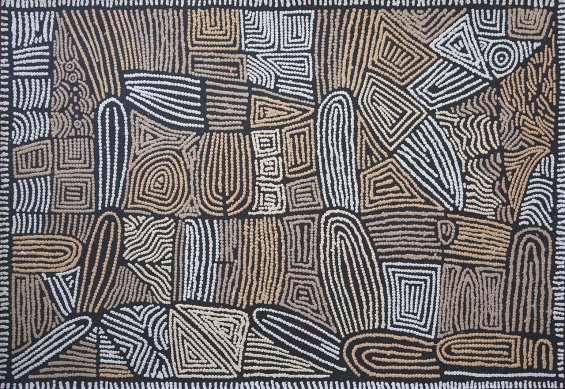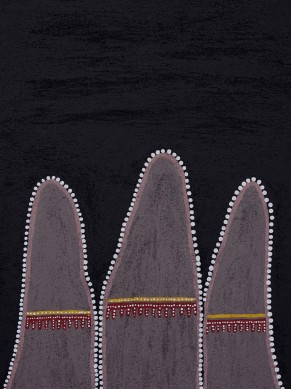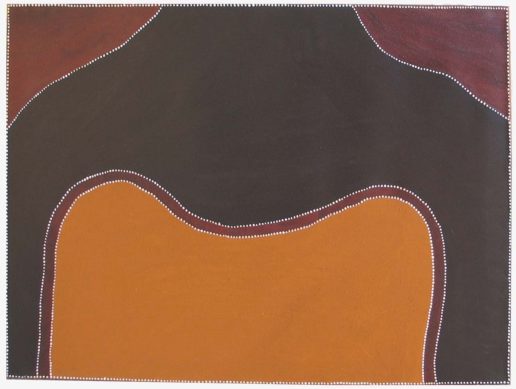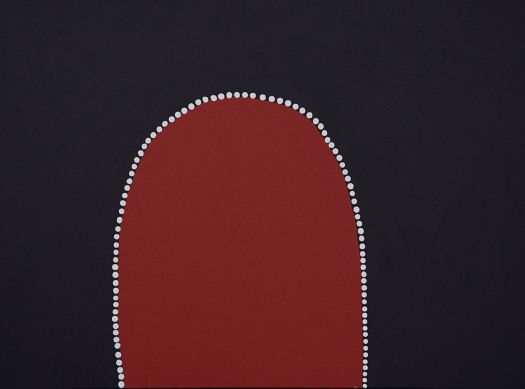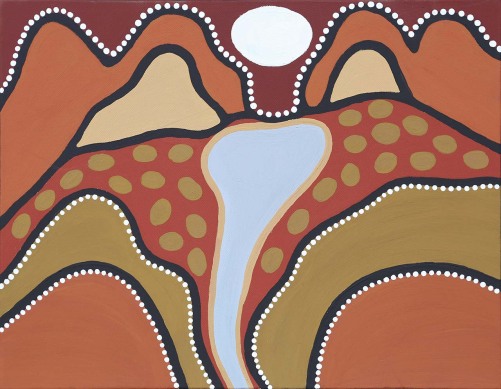Colours of the Earth
Gallery 2 - Online Exhibition
10 December 2014– 10 February 2015
Aboriginal culture is closely associated with life lived close to the land. Knowledge of the natural world is an essential part of the skills of traditional societies that lived as hunters and gatherers, and took on the role as stewards or custodians of the country.
While the Central Desert art movement has seen the proliferation of more colourful paintings over recent decades, many artists chose to remain with the earth colours. Traditional ochre colours associated with Aboriginal art prior to 1970 were sourced from the earth – red and yellow oxides, charcoal black and white clay.
Communities that have maintained the use of ochre painting are strong in the northern regions – in the Kimberley in Western Australia and Arnhem Land in Northern territory. The artists of Warmun have established a highly recognisable style using ochre pigments and often incorporating a side-on view of landscape merged with a aerial perspective. This allows the artist to show the profiles of the hills and ranges while often showing waterholes and tracks as though seen from above. The distinctive composition of simple shapes is reinforced by strong blocks of earth colours, sometimes highlighted by border lines of white dots.
Many Pintupi artists from the Kintore region on the West Australian and Northern Territory border country have preferred to use acrylic paints, but to maintain the more earth coloured palette. The bold symbols derived from sand paintings that often using repetitive patterning, are given a reinforced notion of their heritage by the earth colours.
Arnhem Land artists have used their ancient history of rock art painting to inform their contemporary art, using both the natural ochres and the rarrk or cross hatching designs that are unique to this part of Australia. Arnhem Land artists tend to use a more figurative approach to their art, including animals, birds, spirit figures and artefacts – boats and aspects of the white settler culture.
The exhibition is selected form a range of artists whose work features the use of earth tones and in some cases raw earth pigments. The artists include Kimberley ochre painters Marcia Purdie, June Peters and Tommy Carroll; Western Desert artists Esther Giles Nampitjinpa, Lorna Ward Napanangka, Maisie Campbell Napaltjarri, Eileen Napaltjarri, Thomas Tjapaltjarri, Ray James Jangala, Walala Tjapaltjarri; and Central Desert artist Maureen Hudson Nampijinpa.
Maureen Hudson Nampijinpa
Maisie Campbell Napaltjarri
Joylene Reid Napangardi
Lorna Ward Napanangka
Eileen Napaltjarri
Kim Butler Napurrula
Marcia Purdie
June Peters
Thomas Tjapaltjarri
Walala Tjapaltjarri



